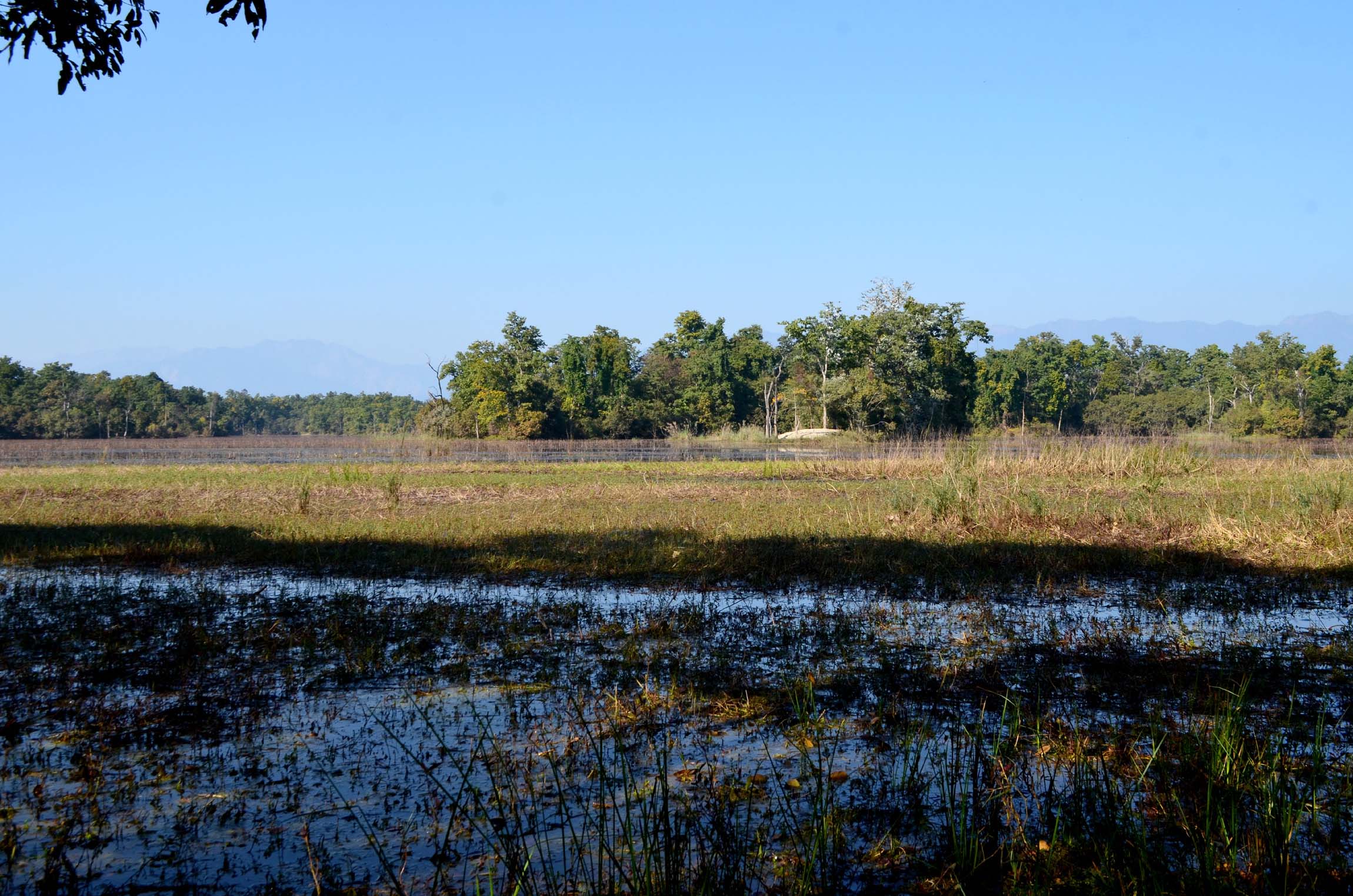Ghodaghodi wetland in danger of drying up

By Avinash Chaudhary, Dhangadi, Jan. 20: The Ghodaghodi wetland situated in Kailali district is at risk of drying due to deforestation and lack of proper management.
Ghodaghodi, which is rich in biodiversity and listed in the World Wetland Area, is at high risk of shrinking due to failure to conserve it as per the wetland norms and values.
Due to deforestation, increasing human encroachment, lack of proper management, the danger of drying of the surrounding lakes, including Ghodaghodi, has increased. "The lakes are disappearing so fast. There may be no wetland remains in the future," said conservationist Dayaram Chaudhary.
There are 24 lakes, both big and small, in the Ghodaghodi wetland area, including Ghodaghodi Lake. These lakes cover an area of 248 hectares.
Conservationists say that the largest and most important Ghodaghodi Lake is being occupied by 12 to 18 millimetres every year. Similarly, Nakrod Lake, spread over 70 hectares north of Ghodaghodi Lake, is also being occupied.
Of the 24, only Ghodaghodi and Nakrod lakes have water throughout the year. All other lakes dry up in winter and dry season.
Conservationist Chaudhary said that Ghodaghodi and Nakrod lakes, which have water all year round, are also being filled due to various reasons. "The natural weeds in Ghodaghodi Lake are piling up every year inside the lake and due to this reason, the depth is decreasing every year," he said.
Ghodaghodi Wetland was listed as a World Wetland in 2003 due to its biodiversity. This wetland is considered to be very important as the Harihans and Nadul ducks found in Nepal breed only on Ghodaghodi wetland. However, alarm bells are ringing every day over the existence of this wetland.
Although the Ghodaghodi wetland looks beautiful from the south, it is in a whirlpool of crisis from the north, said Pushkal Bam, a conservationist and chairman of the Basanta Protected Forest Council. "We just enjoy looking it from the road in the south," he added, "but the lakes are drying up from the north."
There are many community forests to the north of Ghodaghodi wetland. However, because community forests have not been given the responsibility of conserving the lake, the risk of wetland loss has increased. "We all have a responsibility to protect the wetlands," Bam said.
Conservationists understand that there is a danger that it will be removed from the list of World Ramsar Sites in the future if the Ghodaghodi wetland is not protected.
During the rainy season, the depth of Ghodaghodi Lake averages 15 feet. The lake is spread over 138 hectares of land. A 10-year master plan has been prepared through the Ghodaghodi Lake and Tourism Development Board for the conservation of Ghodaghodi wetlands including Ghodaghodi Lake.
Conservation worker Chaudhary said that the conservation of wetlands and management of the lake will be carried out as per the master plan.
It is necessary to clean the lake without affecting the animals in the wetland area, he said. Chaudhary said that the animals would not face any problem if it was cleaned by plotting. Similarly, it is necessary to stop awarding contracts to the fisheries, he said.
"It is not that there should be income generation from lakes. However, there are other ways to generate income by keeping the ecosystem of natural lakes intact,” he said. "Contracting for the fishery for income should be stopped."
Wetlands are wet areas associated with the existence of aquatic animals. However, wetland areas are being destroyed due to human and natural causes. It is said that four lakes including Chandarbijuwa, Bukuwa, Ramphal and Bich-Chatiya in the Ghodaghodi area have dried up.
Recent News

Do not make expressions casting dout on election: EC
14 Apr, 2022
CM Bhatta says may New Year 2079 BS inspire positive thinking
14 Apr, 2022
Three new cases, 44 recoveries in 24 hours
14 Apr, 2022
689 climbers of 84 teams so far acquire permits for climbing various peaks this spring season
14 Apr, 2022
How the rising cost of living crisis is impacting Nepal
14 Apr, 2022
US military confirms an interstellar meteor collided with Earth
14 Apr, 2022
Valneva Covid vaccine approved for use in UK
14 Apr, 2022
Chair Prachanda highlights need of unity among Maoist, Communist forces
14 Apr, 2022
Ranbir Kapoor and Alia Bhatt: Bollywood toasts star couple on wedding
14 Apr, 2022
President Bhandari confers decorations (Photo Feature)
14 Apr, 2022










